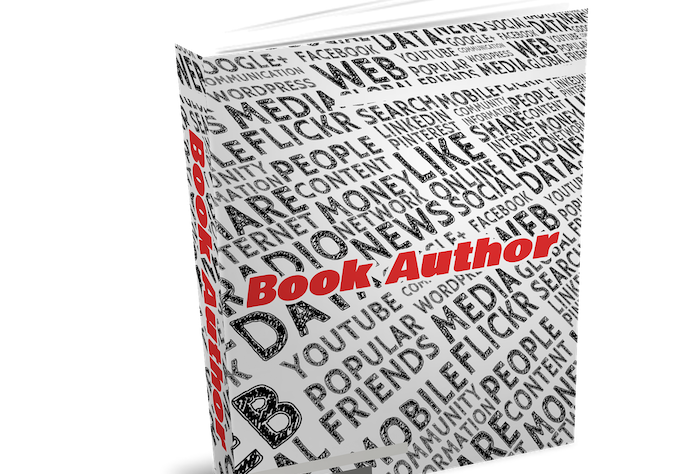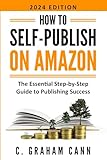The Author as Publisher
Things in the publishing industry clearly haven't changed much since this article on self-publishing was written in 1910.

Sometime or other, in the course of the average author's life, he finds himself with a book manuscript which publishers in general decline to print. It is then that the temptation to publish at his own expense assails him.
Now, in general the author who is his own publisher, like the famous client-lawyer parallel, has a fool for his publisher. If a book is worth bringing out, a publisher of repute will gladly issue it at his expense, paying the author a royalty and retaining the greater part of the receipts. If it is not worth bringing out, he will have nothing to do with it—provided, always, he is a reputable publisher.
Just here is the rub. The country is flooded with "fake' publishers, fraudulent concerns that pretend to print on a cooperative basis, invariably charging the cost price plus a handsome profit, and then dropping all interest in the book after it is issued. They make no promises as to sales, as to quality and quantity; eventually the poor writer discovers, indeed, that the hundred copies he has received have cost him three or four dollars each, and that to secure more he must pay practically the full value. Moreover, the book is gaudy in cover, cheap and wretched in printing appearance, and eternally condemned by the imprint of the disreputable publisher.
There are reasons, however, why an author occasionally desires to publish at his own expense. The appeal of his book may be entirely local, it may be a matter of determining to put it upon the market simply to satisfy the craving to see it between book covers, it may be the rather futile hope of equalling the record of certain successful authors who made fortunes after publishers had pronounced their work quite hopeless. Whatever the reason, the author determines to publish and studies the "how." For his benefit the following points are discussed.
Publisher: Get a reliable printer who does book work for other concerns; do not deal with any printer who is not actually producing book work. Too much attention can not be paid to the selection of the proper printer. Use a firm name that you may register yourself.
Form and Size: The size of the book must depend largely upon the length of the manuscript. If long enough to warrant, it may be made into a book about 5x8, allowing generous margins and not crowding the page.
Paper: Select a paper that is rather heavy and that has a rough finish. By studying printed books you may determine about what is required, and may submit samples. Either arrange with your printer to supply the paper, billing to you, or order it direct from some reputable company. If your printer will turn over the bills he receives, it is advisable to allow him to attend both to the purchasing of paper and to the binding.
Illustrations: In the case of the average novel, illustrations are of no earthly value. They are exceedingly expensive, requiring a smooth, coated paper, which must be inserted into the book separately, one sheet at a time. If you think illustrations advisable, however, get the very best workmanship from your artist, your engraver and your printer. Nothing handicaps the sale of a book more than amateurish work in the drawings, whether it be due to the artistic or mechanical deficiencies.
Type: This is a matter to talk over with your printer. Any large establishment has a book of type samples, which it will give or loan you. Select a type that is well adapted to your reading matter, that is not too "lean" nor too small, and that is nicely proportioned in width and height. Always "lead" or space between the lines.
Margins: Bear in mind that wide margins make the reading easier, the pages "cleaner" and more attractive in appearance, and leave room for any notes or references the reader may care to jot down.
<>Edges: The gift or novelty booklet may have uncut or decide edges, but the book for straight reading should be trimmed neatly and evenly.Binding: Get a book of samples and select an appropriate shade of strong, flexible cloth. It may be worth noting that nine-tenths of all books for general reading are bound in some shade of red or green. Do not show bad taste by using an elaborate cover design of a gaudy, cheap appeal. The title and name of the author are quite enough.
Agreement: Draw up a definite contract with your printer, stating explicitly the cost, the number of copies printed, all points discussed in this article, and finally the absolute ownership of the completed books by the author.
Copyright: It is generally advisable to copyright in your own name. Write to the register of copyrights, Washington, D. C, for application blanks. These are supplied free, and the cost of recording the copyright is minimal.
Disposal: There is no way of selling the books issued by a disreputable concern. A claim of a "select list of book-buyers" may be treated as a jest. The cost of circularizing is exorbitant and no person on such a list will purchase more than a single book issued by an undiscriminating company. Books are called to the attention of the reading public in three ways: by placing them in local bookstores, as is done by salesmen for the large reputable publishers, by reviews in the newspapers in exchange for complimentary copies sent to the editors or reviewers, and by paper and magazine advertising. It is presumed in this discussion that the author has some definite selling plan in mind before publishing his own book.
Read These Next
Hiring a Publicist: Fees and Accountability
Hiring a publicist? Learn about how publicists charge and what to expect before diving in to ensure you get your money’s worth!
What is a Self-Publisher?
A brief look at self-publishing -- what it is, what it isn’t, and why anyone would be crazy enough to try it.
Leveraging Writers Conferences to Build a Writing Career
With a good mindset and a bit of research and preparation, aspiring authors can use writers’ conferences to advance their careers. Here are some tips for making the most of these events.







 Self-Publishing For Dummies (For Dummies: Learning Made Easy)
Self-Publishing For Dummies (For Dummies: Learning Made Easy) Write. Publish. Repeat. (The No-Luck-Required Guide to Self-Publishing Success)
Write. Publish. Repeat. (The No-Luck-Required Guide to Self-Publishing Success) Self Publishing To Amazon KDP In 2023 - A Beginners Guide To Selling E-books, Audiobooks & Paperbacks On Amazon, Audible & Beyond
Self Publishing To Amazon KDP In 2023 - A Beginners Guide To Selling E-books, Audiobooks & Paperbacks On Amazon, Audible & Beyond How to Self-Publish Your Book: A Complete Guide to Writing, Editing, Marketing & Selling Your Own Book
How to Self-Publish Your Book: A Complete Guide to Writing, Editing, Marketing & Selling Your Own Book Self-Publishing: The Secret Guide To Becoming A Best Seller (Self Publishing Disruption Book 2)
Self-Publishing: The Secret Guide To Becoming A Best Seller (Self Publishing Disruption Book 2) Self Publishing To Amazon KDP In 2024 - A Beginners Guide To Selling E-books, Audiobooks & Paperbacks On Amazon, Audible & Beyond
Self Publishing To Amazon KDP In 2024 - A Beginners Guide To Selling E-books, Audiobooks & Paperbacks On Amazon, Audible & Beyond 14 Steps to Self-Publishing a Book
14 Steps to Self-Publishing a Book How to Self-Publish on Amazon: The Essential Step-by-Step Guide to Publishing Success
How to Self-Publish on Amazon: The Essential Step-by-Step Guide to Publishing Success Successful Self-Publishing: How to self-publish and market your book in ebook and print (Creative Business Books for Writers and Authors)
Successful Self-Publishing: How to self-publish and market your book in ebook and print (Creative Business Books for Writers and Authors) How to Publish a Book on Amazon: A Bestseller’s Guide to Self-Publishing, Formatting, and Marketing Using Amazon Ads
How to Publish a Book on Amazon: A Bestseller’s Guide to Self-Publishing, Formatting, and Marketing Using Amazon Ads